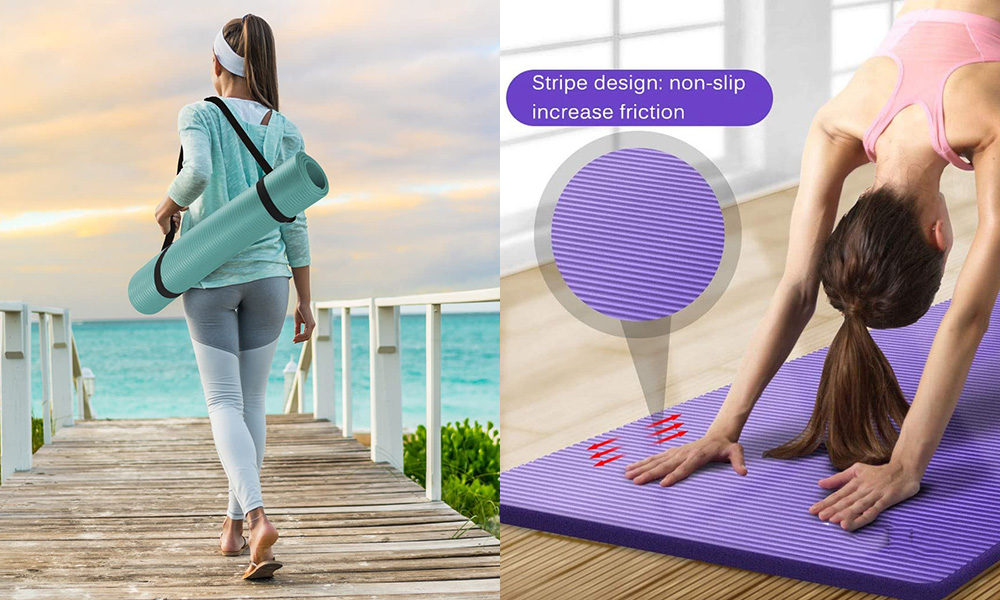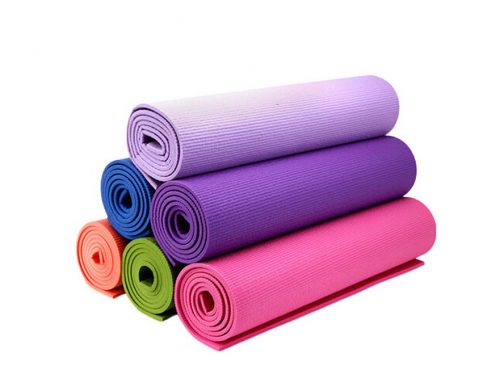Table of Contents
Nitrile rubber (NBR) is a copolymer formed by polymerization of acrylonitrile and butadiene monomers, which is produced mainly by emulsion polymerization of low-temperature. It has good oil resistance, higher wear resistance, better heat resistance and stickiness. But it has bad resistance to low temperature, poor insulation, bad ozone resistance, and a little lower elasticity.
Nitrile rubber is mainly used to produce oil-resistant rubber products. The acrylonitrile content (%) in nitrile rubber include five types: 42-46, 36-41, 31-35, 25-30, 18-24. The more acrylonitrile in Nitrile rubber, the better the oil resistance Nitrile rubber will have, but the cold resistance decreases. It can be used in the air at 120°C or in the oil at 150°C for a long time. In addition, Nitrile rubber also has good air tightness, water resistance and excellent bonding feature. So it is widely applied in the various oil-resistant rubber products, different oil-resistant gaskets, casings, flexible hoses, flexible packaging, cable rubber materials, etc. , As a elastic material, it has become necessary in industries like automobiles, petroleum, aviation and copying.
Performance
NBR has good oil resistance. The proportion of trans form in a typical NBR structure register around 78%. Thanks to the cyano group contained in the molecular chain of NBR, its oil resistance (such as liquid fuel, animal and vegetable oil and solvents) is better than neoprene rubber, natural rubber and styrene butadiene rubber. NBR can be applied in a wider range of temperatures than other rubbers. Its ideal temperature is 120°C. At the same time, NBR has good resistance to low temperature, and the lowest temperature of glass transition can reach -55°C.
NBR has good processing performance and chemical resistance. As the relative density of the acrylonitrile in its structure increases, the vulcanization speed becomes higher, and the tensile strength increases, but the resilience decreases and the cold resistance becomes worse. Considering the cyano group in NBR is easily polarized by the electric field, so the dielectric performance decreases, making it a semiconducting rubber. NBR can be divided into 5 types: super-high, high, medium-high, medium and low acrylonitrile according to the content of ACN. There are two production methods: continuous and batch polymerization. The former method is usually used for small variety but large-volume production, so it has low consumption. The latter method is suitable for multi-variety but small batch production, so consumption is high in the construction.
Although nitrile rubber features excellent processing properties and physical and mechanical properties, in sour gasoline and high temperature (150℃) it is not as good as fluorine rubber and acrylate rubber if it is used for a long time. That is why hydrogenated nitrile rubber ( HNBR) with excellent performance as well as ultra-cold-resistant carboxyl nitrile rubber (XNBR) and high-purity nitrile rubber were developed.
Basic performance
Nitrile rubber is a elastomer with a color of light brown, with about 700,000 of molecular weight. The strong polar CN group makes it excellently stable to aliphatic hydrocarbon oils and gasoline. The types are as followed according to the different divisions of ACN enlightenment:
Ultra-high two-coal nitrile rubber: more than 43% of ACN
High acrylonitrile rubber: 36%-42% of ACN
Medium and high propylene wax rubber: 31%-35% of ACM
Medium two dilute nitrile rubber: 25%-30% of ACN
Low acrylonitrile rubber: below 24% of ACN
General performance
Nitrile rubber features great heat resistance. Its heat resistance is better than both styrene butadiene rubber and natural rubber. It can be used at 100 ℃ in the long term, and it can last for 40 days at 120℃.
①The ozone resistance is worse than CR but better than NR.
② Endow rubber with better mechanical and physical properties and wear resistance through reinforcement.
③When the content of acrylonitrile in the nitrile rubber reaches 39%, its air tightness is as good as that of the IIR rubber.
④Normal flexibility at low temperature.
⑤Great antistatic performance.
⑥Admirable plasticizing effect of polar lipids.
⑦Good compatibility with polar substances, such as PVC, nylon and alkyd resin.
⑧ Low self-adhesiveness, and massive heat generated during the mixing process.
Excellent oil resistance
Nitrile rubber is one of the most representative one with excellent properties in all respects such as oil resistance, chemical resistance and physical and mechanical properties. It can be applied widely by effectively making use of these properties. Among the general-purpose rubbers, NBR rubber in resistance to benzene, petroleum-based oils and non-polar solvents are much better than other non-polar rubbers like SBR, NR, IIR, as well as polar CR. However, its performance of polar oil resistance and solvent is not good enough.
The influence of ACN content on performance
With the increase of ACN content and the polarity of NBR, the flexibility of the chain decreases and the interaction force between chains increases, the degree of saturation increases, and the content of double bonds in the molecular chain decreases, leading to a series of changes in performance. Its air tightness, oil resistance and wear resistance are improved, while cold resistance and processability are declined.

The main purpose
The excellent oil resistance and physical and mechanical properties of NBR makes it widely used in the manufacturing of various oil-resistant rubber products, such as O-rings, hoses, gaskets, fuel tank lining rubber, insulating floor boards, fabric coatings, hard rubber parts and oil resistant shoe soles, pipe thread protective layers, wire wraps, adhesives, food and rubber gloves, yoga mats, fitness mats etc. In 2014, there were more than 30 countries that produced NBR in the world, and the largest consumption was the production of flame-retardant conveyor belts and oil-resistant hose products with about 53% of the total consumption of NBR. Applying chlorinated butyl rubber and nylon sandwich as the inner and outer layer can produce a new type of hose which can prevent Freon gas from seeping out. The automobile with HNBR as the inner rubber, nylon 66 as the reinforcing layer and CSM the outstretched features good steering power, which can stand 4 million pulses at 12°C. In addition, nitrile rubber is also a good material for automotive and aircraft fuel and automotive Asahi continuously variable transmission tape. The Nitrile rubber in our country is mainly used in the automobile, military and aviation industries, mainly in oil-resistant parts such as fuel tanks, and it is also used in transmission belts, seals, hoses and plastic modified materials. The consumption is increasing year by year. Almost all the sundries factories and hose factories use NBR more or less. The second largest application of nitrile rubber is sealing rubber products, which are widely used in transformers, aerospace devices and liquefied petroleum gas pipelines. Among them, automotive seals account for about 50% of the total consumption of seal rubber products. The nitrile rubber used in wire and cable products in our country is about 1000t every year. New alloy materials such as NBR/PS, NBR/PP, NBR/PVC> NBR/PA, NBR/CSM, NBR/ACR, NBR/EPDM, NBR/BR can be produced through dynamic vulcanization technology and compatibilization technology, so it has good market prospects. NBR is also used to make oil-resistant rubber sheets, oil tanks, printing rubber rollers, oil containers and oil-resistant rubber shoes, etc.
The development of NBR modified varieties makes nitrile rubber more applicable. In summary, the application mainly include: the manufacturing of fuel oil pipes, grease cloths, refueling pipes, oil seals, oil-resistant rubber parts and various products in contact with oil. With good compatibility with acetate resin and PVC, Nitrile rubber is often blended with resin to modify material. PVC is usuaally used to improve impact resistance and processing performance, and phenolic resin is used to obtain fertile materials and to produce asphalt-mixed fluid materials.
Nitrile rubber is used mainly in manufacturing of oil-resistant products, such as tapes, oil-resistant pipes, rubber membranes and large oil sacs. Besides, it is often used to make various oil-resistant molded products, such as cups, O-rings, diaphragms, oil seals, valves, bellows, etc. Hoses, seals, foams as well as wear-resistant parts and rubber sheets. Yoga mat manufacturers need to purchase a large amount of NBR every year.
The meanings of the symbols on the nitrile rubber varieties in the world are briefly described as follows.
First, the product grades of Cheng Rubber Factory and China Lanzhou Chemical Company are composed of DCJ and suffix three numbers. The first two digits indicate the amount of combined acrylonitrile. On the request of the national standard GB5577-85, a four-digit number consisting of NBR and a suffix has been adopted. The first two digits suggest the minimum amount of combined acrylonitrile, and the fourth digit indicates the ten digits of the low limit of Mooney viscosity. For example, NBR1704 means a pollution-type high-temperature polymerized nitrile rubber with a Mooney viscosity of 40-65 and combined acrylonitrile content of 17-20%.
Second, the product brand of Goodrich Chemical Company in the United States consists of ycar and a four-digit suffix. The first two digits indicate the form of nitrile rubber: 10 means block, 13 means liquid, and 14 powder. The third digit indicates the performance of nitrile rubber: 0 means standard type, 1 means easy processing type, 3 means easy dissolving type, 4 low temperature polymerization. The fourth digit means the amount of combined acrylonitrile: 1 indicates high nitrile grade, 2 indicates medium-high nitrile grade, 3 indicates medium nitrile grade, 4 low nitrile grade, and the last two digits 72 mean carboxylated nitrile rubber.
Third, the product brand of Polysar in Canada is Nrynac, and the suffix has two combinations that are three digits and four digits. The former is divided into two series of 820 and 800, among which the 100 and 200 series mean carboxylated nitrile rubber; When the latter is combined, the first two digits indicate the amount of combined acrylonitrile, and the last two digits suggest the Mooney viscosity.
Forth, the product brand of Japan’s ゼォン company is Nipol, and there are two combinations which are DN suffix three digits and N suffix two digits in the product brand. The first digit of the three-digit number of the DN suffix indicates the amount of bound acrylonitrile, 0, 1, 2, 3, and 4 indicate the 5 grades of amount of bound acrylonitrile: very high, high, medium-high, medium and low, and 5 represents modified polyvinyl chloride, 6 represents liquid nitrile rubber, and 12 indicates nitrile rubber copolymerized with EDM. The first number in the two digits of the N suffix is from 2 to 4, which means the amount of acrylonitrile bound. The larger the number is, the lower the content will be. The second digit 0 means standard high temperature polymerization, 1 means standard low temperature polymerization, and 3 means low Viscosity is non-corrosive to metals. 4 means carboxyl nitrile rubber, 2 or J appended to the second digit means nitrile rubber with good teeth and processing properties.
Fifth, the product brand of Bayer Company in Federal Germany is PerbunanN suffixed with four digits. The first two digits indicate the amount of combined acrylonitrile, the last two digits mean Mooney viscosity; NS indicates non-polluting type.
Sixth, the Soviet product brand is composed of CKH and a two-digit suffix. The number indicates the amount of combined acrylonitrile. M indicates easy-to-process type, H indicates non-polluting type, A indicates low-temperature polymerization, and C means that the emulsifier is a mixed soap.
Do You Want To Make Custom Design Yoga Mat?
Drop Us An Email And You Will Receive Our Feedback Within 24 Hours.
As a leading yoga mat manufacturer, Speck Group focuses on innovation, quality, simplicity, and sustainability.






